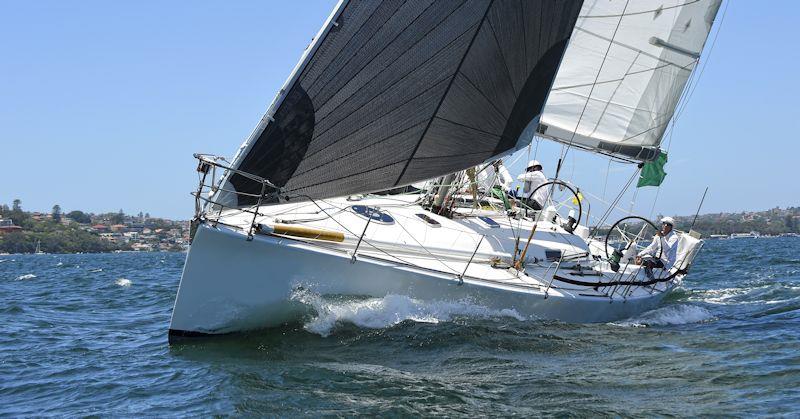
Which top-down furler do I choose for my 25ft sports boat?
by Diego Sosa, Upffront 17 Oct 2018 08:00 UTC

Which top-down furler do I choose for my 25ft sports boat? © Shutterstock /
www.shutterstock.com/g/alvov
You have a 25ft sportsboat and need a top-down furler, which one should you choose?
One of key our principles is to offer a good selection of hardware and rigging options with high quality technical information to give you the details you need to make informed product choices.
So, let's take this recent customer question and see where it leads us when we compare the options from the Karver, Facnor and Ronstan furler ranges.
Starting principles
There are two key aspects which are particular to specifying top-down furlers:
1. The working loads are relatively small
- For most of the time the gennaker is deployed, the torsional rope (cable) is relatively slack
- It is only during furling and unfurling that the torsional rope (cable) must be tensioned
- But even then, only enough load is required to keep the torsional rope (cable) firm rather than highly loaded
2. "Speed is King"
- Because top-down is for deep, downwind sails there is a lot of sailcloth to gather up in the furl
- Therefore, speed is an essential element to a successful furl
- Speed can be increased with a smaller drum but remember; as the drum gets smaller the load on the line increases, so you need strong arms or bigger winches to deliver the speed
Karver
Karver is one of the best known furler brands and has a reputation for lightweight performance and is in use on a lot of grand prix race boats as well as cruising boats.
The smallest top-down unit they supply is the KSF1 with a Safe Working Load (SWL) of 1500kg which is definitely more than we need on our 25ft asymmetric. Key stats:
- Unit: Karver KSF1
- SWL (kg): 1500
- Weight (g): 653 (Inc shackles)
- Drum diamater (mm): 111
- Jaw Width (mm): 11
- Retail Price (Inc VAT): €1.396,25
Karver KSF1 furling drum with integral tack swivel
Facnor
Facnor does have a smaller unit, the FX+900 with a SWL of 900kg. Facnor has a philosophy on top-down furling where they sacrifice some weight but use top-down adaptors on standard bottom-up furling drums. This allows you to use the same drum for multiple sails reagrdless of whether they are top-down or bottom-up. Unfortunately, for some reason, they do not have a top-down adaptor for the FX+900 and only start at the next size up, the FX+1500 with a SWL of 1500kg - which is the equivalent unit to the Karver KSF1
- Unit: Facnor FX+1500 (Inc top-down adaptor)
- SWL (kg): 1500
- Weight (g): 786 (Inc shackles)
- Drum diamater (mm): 121
- Jaw Width (mm): 15
- Retail Price (Inc VAT): €1.293,86
Ronstan
Next up, the Ronstan Series 80 Gen2 top-down furler. This is a dedicated top-down furling drum with integral tack swivel and a SWL of 950kg. So, straight away, the Ronstan is on with a significant advantage, but how do the statistics compare?
- Unit: Ronstan Series 80 Gen2 top-down
- SWL (kg): 950
- Weight (g): 352 (Inc shackles)
- Drum diamater (mm): 80
- Jaw Width (mm): 10
- Retail Price (Inc VAT): €1.004,86
So, which one to choose?
On face value, the Ronstan Series 80 seems to occupy a relative niche in the market, which fits our customers' requirements: low SWL, top-down furling. It offers a very significant weight advantage over the Karver and Facnor options (50% of the other two, larger units) with the knock-on advantage of being the least expensive. It also has the smallest drum diameter which, assuming you have the power to drive it, will deliver the fastest furling speeds.
The only potential disadvantage of the Ronstan unit is the jaw width of 10mm. It is always important to consider the furling unit jaw width as, particularly with top-down furling, the torsional ropes/cables tend to have larger diameters. Depending on your specific 25 footer, for effective top-down furling, a 9mm rope will probably be recommended by your sailmaker. A 9mm rope is going to be a very tight fit for the Ronstan, perfect for the Karver KSF1 and positively "sloppy" for the Facnor FX+1500. They should all work in this regard but please remember that this is a furling "system" and the interface between the furling unit and cable is very important.
In this instance, having confirmed the required torsional rope would fit, the Ronstan Series 80 was our clear recommendation.
If you are looking for a new top-down furling unit then you can review all the technical details for the Ronstan, Karver and Facnor ranges online here.
Would you like a tailored proposal for your boat and sailing style?